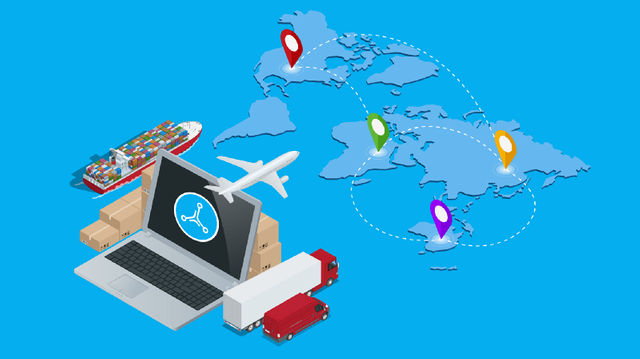
Post written by our amazing advisor, Penny Register-Shaw!
The path that a product takes from its manufacture to its ultimate destination begins with forecasting quantities and purchasing components. Along the way, every element of touchpoint-storage, packaging, transportation, customer service, inventory management, and disposal is a component of logistics.
What People Don’t See Behind the Scenes in Logistics
A few years ago, I calculated all of the possible permutations in 20 global trade routes. During this time, I calculated that an average international transaction has 144 steps while only 20 are automated and less than a dozen are adequately measured.
Lesson One — Drowning in Paper
Even those who are devoted to logistics do not have the ability to police every aspect of the flow of materials and information at once. Big data and algorithms are relied upon to pick up patterns in the data to prevent dishonest behaviors that add costs and potential danger to the supply chain.
However, logistics remain as a paper-intensive pursuit requiring mountains of documents. This chaos creates countless opportunities for dishonest behavior and human error.
Blockchain technology addresses these issues by creating, storing, and authenticating transactions to prevent tampering or alteration of records. As a result, the data becomes more reliable from end-to-end by targeting weaknesses and preventing fraud.
Lesson Two — Specialization
Over time, the logistics industry has been divided into hyper-focused segments. While specialization can lead to increased focus, expertise and efficiency, it can result in each segment individually optimizing its results at the expense of the whole.
Blockchain adoption minimizes these issues by creating accountability and trust among a body of people collaborating as a whole on the movement of goods. It allows two or more entities to exchange and add value with less waste because everyone is following the master rules established in the ecosystem.
Lesson Three — Loss of Control and Quality
Outsourcing comes with a price tag that is not always apparent. Although outsourcing decreases certain costs such as manufacturing, it likely means a loss of control over quality among other important things.
When your supply chain is outsourced, it becomes difficult to control the quantity of stock. Precise forecasting becomes a necessary function because orders have to be placed months in advance of the selling season. In the majority of cases, there is little opportunity for additional products to be manufactured, because a company has used its place in the queue, and the manufacturing facility has moved on to other work.
In the future, companies can use blockchain technology to sell unallocated resources quickly, keeping them nimble. Companies relying on third parties can increase production by scooping up unused assets in the cooperative economy enabled by blockchain.
Lesson Four — Tracking and Tracing
The proliferation of food traceability requirements is a recognition of the fact that most of the modern food passes through many hands before being consumed. This increases the risk of contaminants into the food supply. Blockchain can enhance food quality and safety because retailers and consumers can trace each step taken before sale or consumption.
Over the years, I have refreshed my research into logistics, supply chain, and outsourcing many times. Blockchain has changed my thinking radically since it removes the veil off of the hidden world of logistics.
Over the years, I have refreshed my research into logistics, supply chain, and outsourcing many times. Every quarter, my team and I studied the most recent government regulations, how trade was dealing with them, and new security risks. I kept learning new lessons, but, until recently, my colleagues and I still thought of solutions in terms of increased headcount and improved training programs. Blockchain changes my thinking radically. It brings the hidden world of logistics — the excessive paper, bad data, waste, fraudsters, invisibility, and lack of accountability — out of hiding and into the light.
— — — — — — — — — —
Serve’s mission is to provide the world with the perfect delivery experience!
Interested to see how Serve is brining revolution to logistics? Check out our whitepaper here! You can also join our Telegram Community here to talk with the Serve team directly!